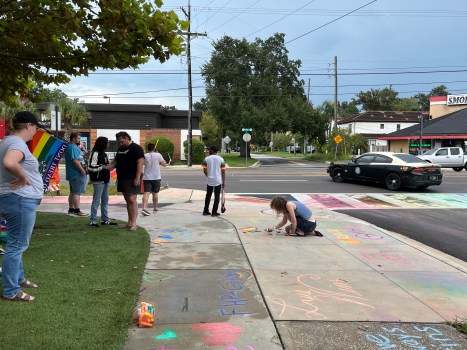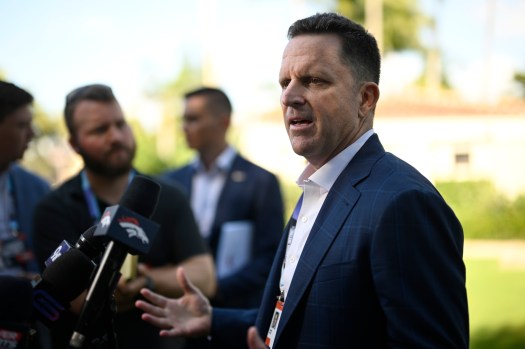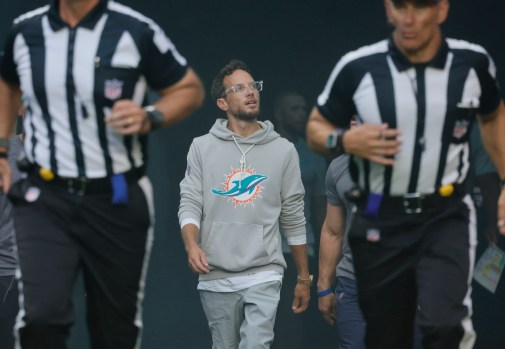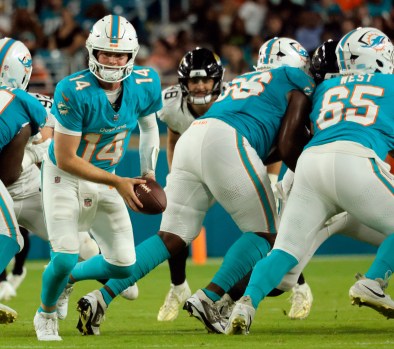The multicolored crosswalk next to the old Pulse nightclub in Orlando is in danger as a result of the Trump Administration’s efforts to remove rainbows and other political banners from sidewalks and crosswalks across the country.
This week, Transportation Secretary Sean Duffy introduced a safety plan that calls for uniform road markings in a letter to the country’s governors. He made his intentions clearer in a post on X that same day.
He said that taxpayers want their money to support safe streets, not rainbow crosswalks. There is no place for political banners on public highways. I’m reminding @USDOT roadway funding applicants that the funding is only available for measures that improve safety. It’s that easy.
Orange Avenue near West Esther Street has had a rainbow crosswalk since 2017. It is located at the southern edge of Pulse, a nightclub that was once seen to be a safe haven for LGBTQ people and where a mass shooting on June 12, 2016, left 49 people dead and 53 injured.
Although Duffy’s letter doesn’t particularly address rainbows or political banners, it does express the agency’s intention to collaborate with state and local governments in order to make the entire roadway right-of-way more accessible and understandable for all users. Although that represents a 3.8% drop from the previous year, it nevertheless calls the 39,345 traffic fatalities from the previous year intolerable.
The first openly homosexual elected person in Central Florida, City Commissioner Patty Sheehan, stated that she was not shocked to learn that the crosswalks and similar ones were under jeopardy. However, she pointed out that the rainbow crosswalk is a component of the nightclub shooting memorial’s design, which was funded by the state and included in the budget enacted this week by Governor Ron DeSantis.
“It’s awful that they’re attempting to undo anything that honors marginalized people,” Sheehan added. I would hope they wouldn’t do anything that would harm the Pulse memorial, which also has the rainbow crosswalk and for which the state recently donated $400,000.
The Florida Department of Transportation sent a separate memo to city officials on Wednesday, albeit one day before Duffy’s, stating that surface markings must have a practical, safety-related purpose and that the department’s design manual expressly forbids applying pavement or surface art to travel lanes, paved shoulders, intersections, crosswalks, or sidewalks.
According to the state letter, the handbook explicitly states that pavement art that conveys social, political, or ideological statements is prohibited and that the state has the right to deny financing to any organization that does not comply.
However, the note states that if the public agency can provide a valid reason, the marks may remain on the road with state approval.
In an effort to improve crosswalk visibility and, presumably, pedestrian safety, Orlando transportation officials have painted creative murals on at least five significant downtown crosswalks in recent years.
At the time, they referenced studies from Bloomberg Philanthropies that showed a 37% decrease in pedestrian-related crashes at intersections with asphalt art and a 50% decrease in pedestrian-related crash rates. According to the group’s research, drivers also ceded to walkers 27% more frequently at these intersections.
Those paintings appear to violate the state’s direction even if they feature the Lake Eola fountain, orange slices, the lake’s well-known swans, and other apolitical artwork.
According to a spokesman, city officials are examining the state’s orders and have not yet received the federal letter.
A 400-foot Black Lives Matter mural along Rosalind Avenue, painted in the colors of the Pan-African flag, was paved over when the paintings were unveiled in 2023.
Following the killing of George Floyd in Minneapolis, which sparked protests against institutional racism and police brutality across the country, including in Orlando, it was initially painted in June 2020 by local authorities and community members. Three years later, when the street was repaved, the mural was finally hidden.
Prior designs, like the rainbow colors on the Lake Underhill Bridge on State Road 408 in Orlando in the weeks following Pulse in 2016 and on other state bridges in the years that followed, were prohibited by the new FDOT memo on street surfaces, which follows the agency’s February adoption of a policy to restrict lighting on state-managed bridges to a default scheme of red, white, and blue.
OrlandoSentinel.com/rygillespie










